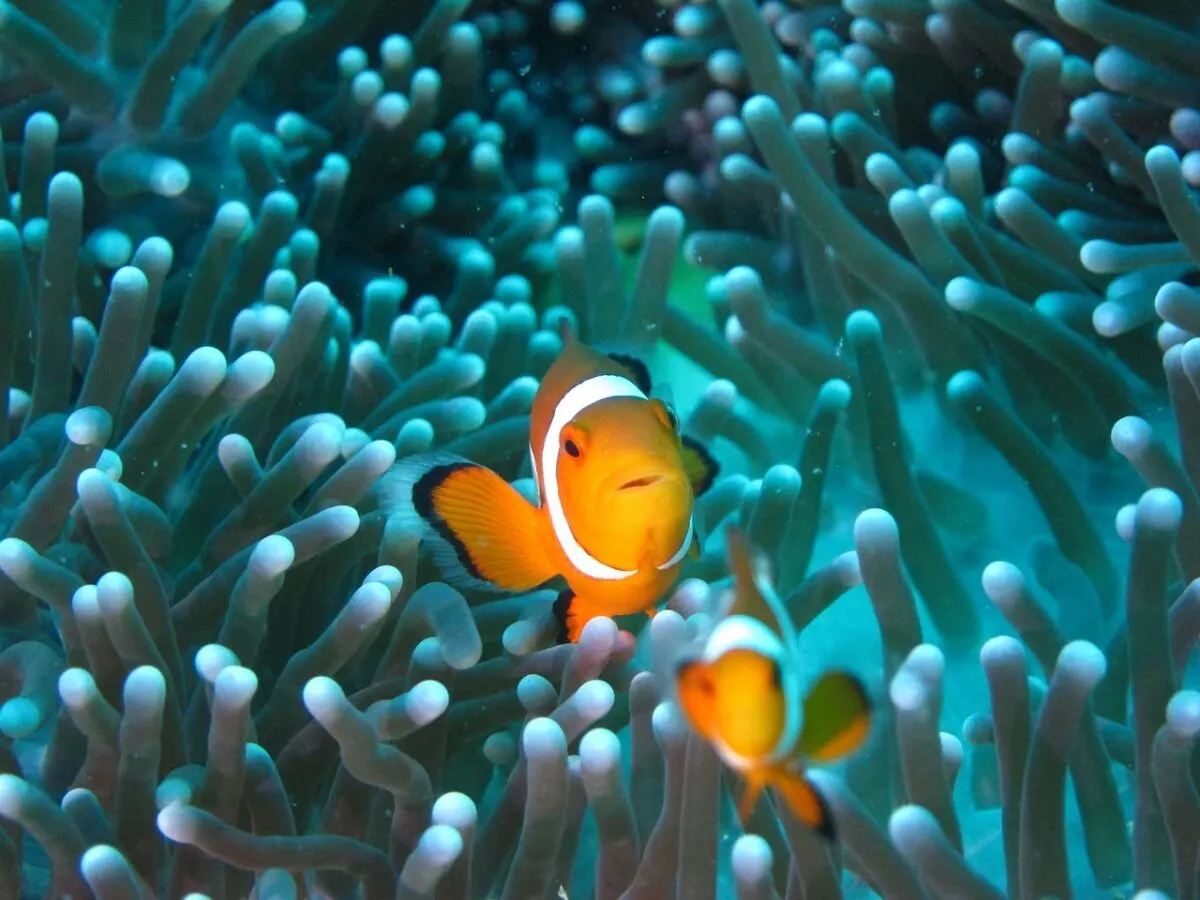Clownfish and Sea Anemones are the ultimate partners in crime!
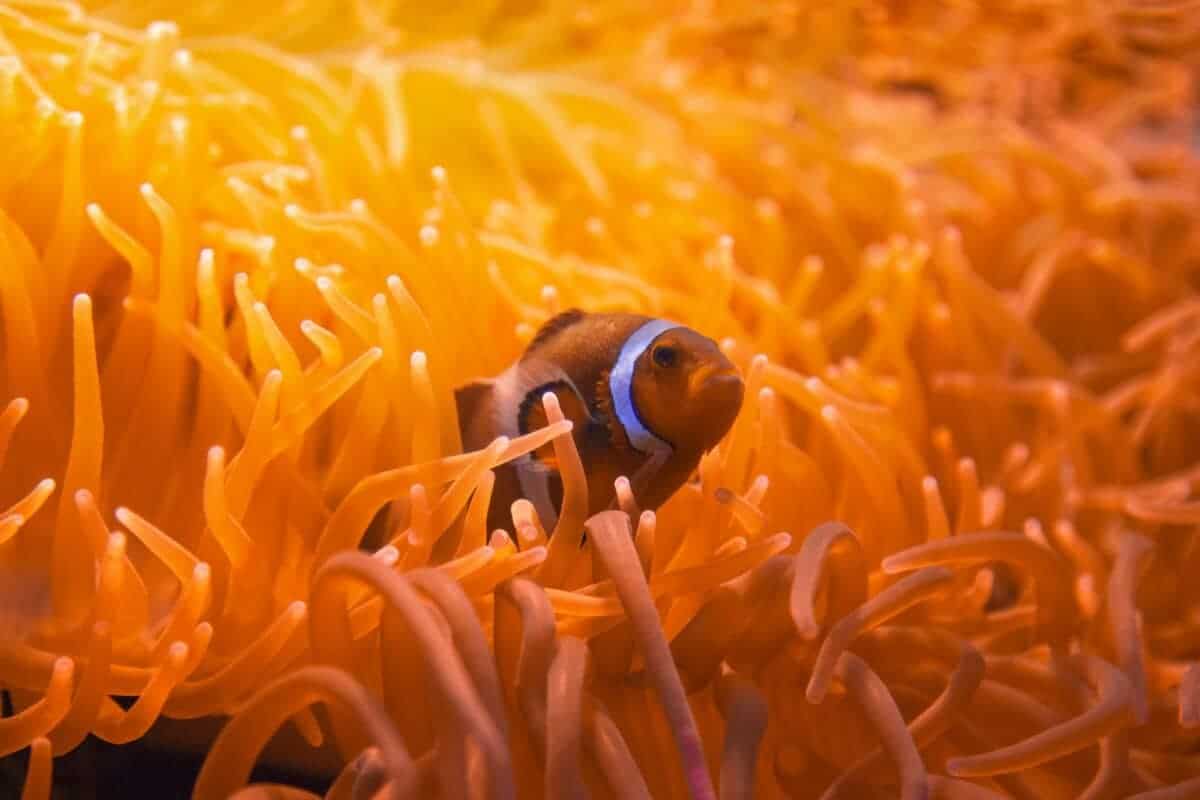
Have you ever heard of the surprisingly close bond between clownfish and sea anemones? It’s a unique and fascinating relationship. It is safe to say that clownfish and their marine neighbors are partners in crime – one provides food while the other receives protection.
This peculiar type of ‘symbiosis’ is present throughout the oceans. But, perhaps none are more iconic than that of clownfish and their preferred anemone homes.
Let’s look at this cooperative relationship between these two unlikely aquatic friends. We’re going to assess what their relationship entails, how it benefits them, and some fun facts about how it started!
Key Points
- Clownfish and sea anemones have a mutualistic relationship where both benefit from living near each other.
- Clownfish provide food for anemones, while anemones protect and provide shelter for clownfish.
- Clownfish have unique adaptations, such as a mucus covering, allowing them to live safely among anemones.
- Anemones rely on clownfish to bring them food, including small crustaceans and algae.
- Human activities, such as overfishing and pollution, pose threats to the survival of both clownfish and anemones, highlighting the need for conservation efforts and sustainable practices.
Comparison Table
| Trait | Clownfish | Sea Anemones |
|---|---|---|
| Appearance | Brightly colored with vibrant patterns of orange, black, and white stripes | Cylindrical in shape with a soft body in green, pink, or purple, featuring colorful tentacles surrounding a central mouth |
| Mutual Benefit | Provide food to anemones | Protection from predators |
| Cleaning Role | Clean anemones by removing parasites and debris | Shelter and cover for clownfish |
| Size | Size varies by species (typically 2-5 inches) | Size varies by species (typically 1-2 feet) |
| Weight | Weight varies by species (typically a few ounces) | Weight varies by species (typically several pounds) |
| Lifespan | Lifespan varies by species (typically 3-10 years) | Lifespan varies by species (typically several decades) |
Introduction To Clownfish and Sea Anemones
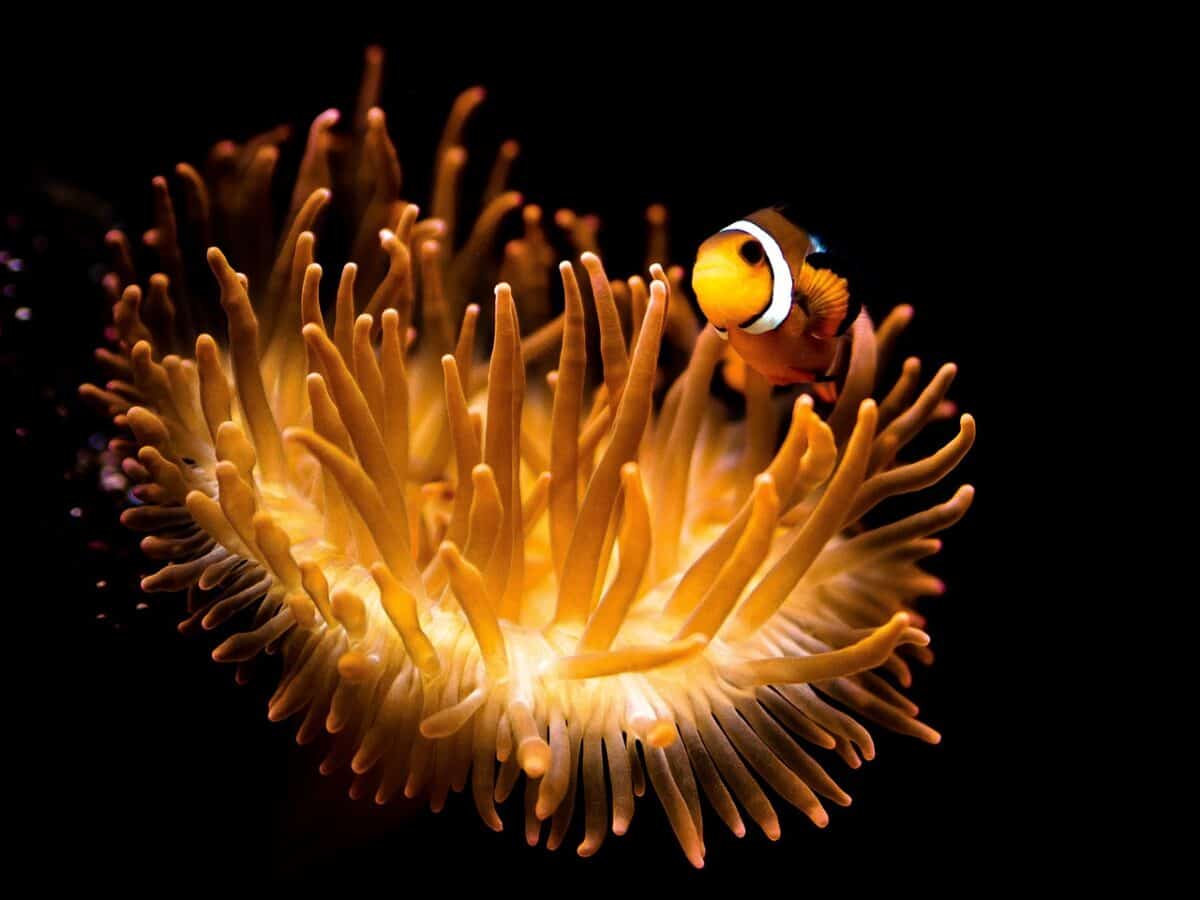
Clownfish and sea anemones are fascinating creatures closely related to the coral reef ecosystem. Clownfish are known for their vibrant colors and entertaining behaviors. Meanwhile, sea anemones are recognizable for their tentacles and sticky substance that can immobilize small prey.
These two species share a unique relationship known as mutualism, in which both creatures benefit from living near one another. The clownfish is protected from predators by the anemone’s stinging tentacles. At the same time, the anemone benefits from the clownfish’s waste, which provides nutrients for the anemone to thrive.
The clownfish is nothing short of adorable, but an even cuter fish is the Dwarf Pygmy Goby.
What Is a Symbiotic Relationship?
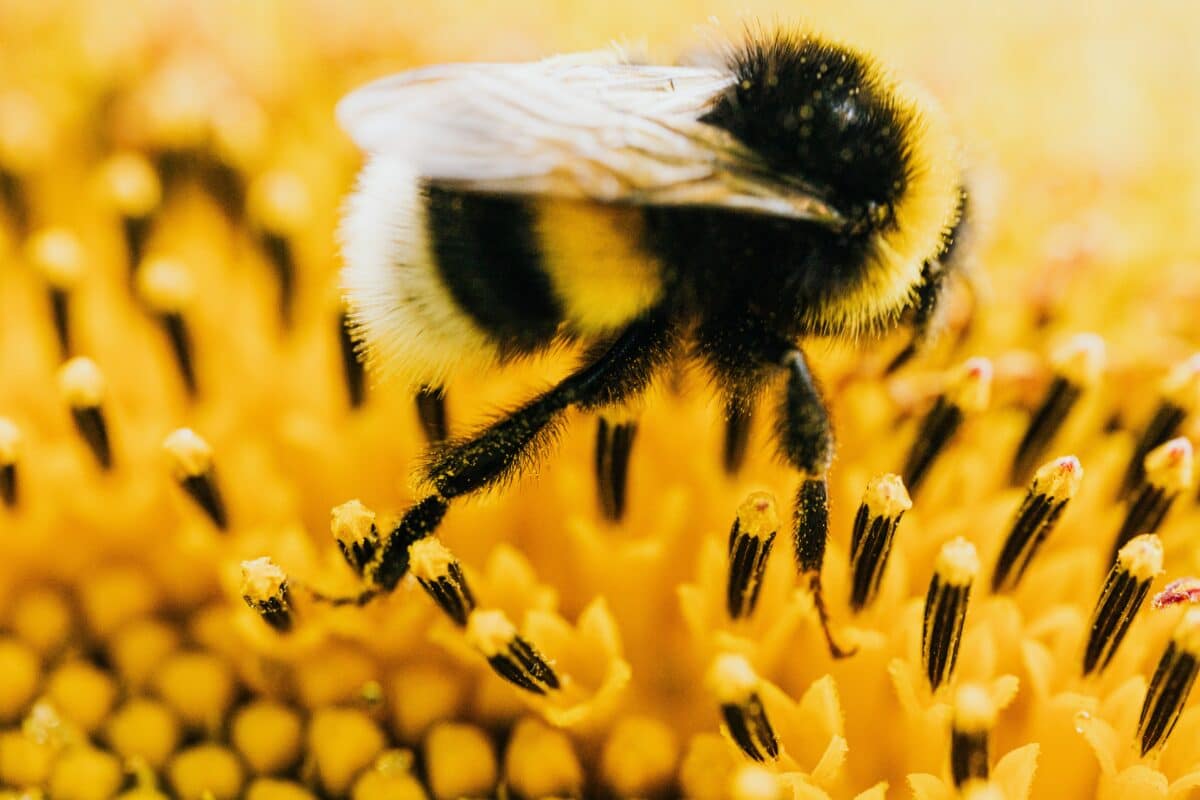
Symbiotic relationships are complex interactions between two different species living in close physical association, often to the advantage of one or both organisms. They can take various forms and the different types of symbiotic relationships include:
- Mutualism: Where both organisms benefit
- Commensalism: Where one benefits without affecting the other
- Parasitism: Where one benefits at the expense of the other
More on Mutualistic Relationships
A mutualistic symbiotic relationship is a form of biological interaction where both parties derive a benefit, illustrating the intricate web of interconnectedness in nature. Other than the clownfish and anemone, an exemplary case is the relationship between bees and flowering plants. Bees gather nectar from flowers as a food source, while simultaneously facilitating the pollination process for plants.
These relationships, ubiquitous in nature, are crucial. They enable species to survive in their environments by exploiting different survival strategies, illustrating the intricate balance and interconnectedness of life on Earth.
Mutual Benefits: How Clownfish and Sea Anemones Depend on Each Other

In the vast and mysterious ocean world, clownfish and sea anemones have a unique and fascinating relationship. These two creatures have a mutualistic dependency that ensures their survival.
Clownfish provide food for sea anemones through their constant movement, which attracts prey for the anemone to catch. In return, the anemone provides protection and shelter for the clownfish by stinging any predator that tries to harm them.
Anemone Protection: Clownfish As “Cleaners” and Defenders
Did you know that clownfish are crucial in protecting their anemone homes? These little fish are known for their colorful appearance and behavior as “cleaners” and defenders of their host anemone. Clownfish feed on the algae that grow on the anemone and help keep it clean.
Additionally, these fish fiercely defend their homes from any perceived threats. This includes predators and even other clownfish from other anemones. In turn, anemones provide protection for clownfish by providing cover from predators and occasionally even food.
Clownfish Adaptations For Anemone Living
Clownfish are not just any ordinary fish. Their unique adaptations allow them to thrive in the sea anemone’s tentacles, a creature considered dangerous to most other marine life.
One major adaptation is the mucus covering their skin that prevents them from being stung by the anemone’s toxic tentacles. And not only do they live amidst the potentially harmful creatures, but they also form a symbiotic relationship with them.
Anemone Nourishment: Clownfish As Providers of Food
Anemones provide shelter for clownfish. In return, clownfish nourish anemones by bringing them food. These fish are a crucial source of nourishment for their hosts, as they bring in small crustaceans and algae to share with the anemone. It’s a fascinating relationship showcasing life’s interconnectedness in the ocean.
Communication and Recognition: How Clownfish And Anemones Interact
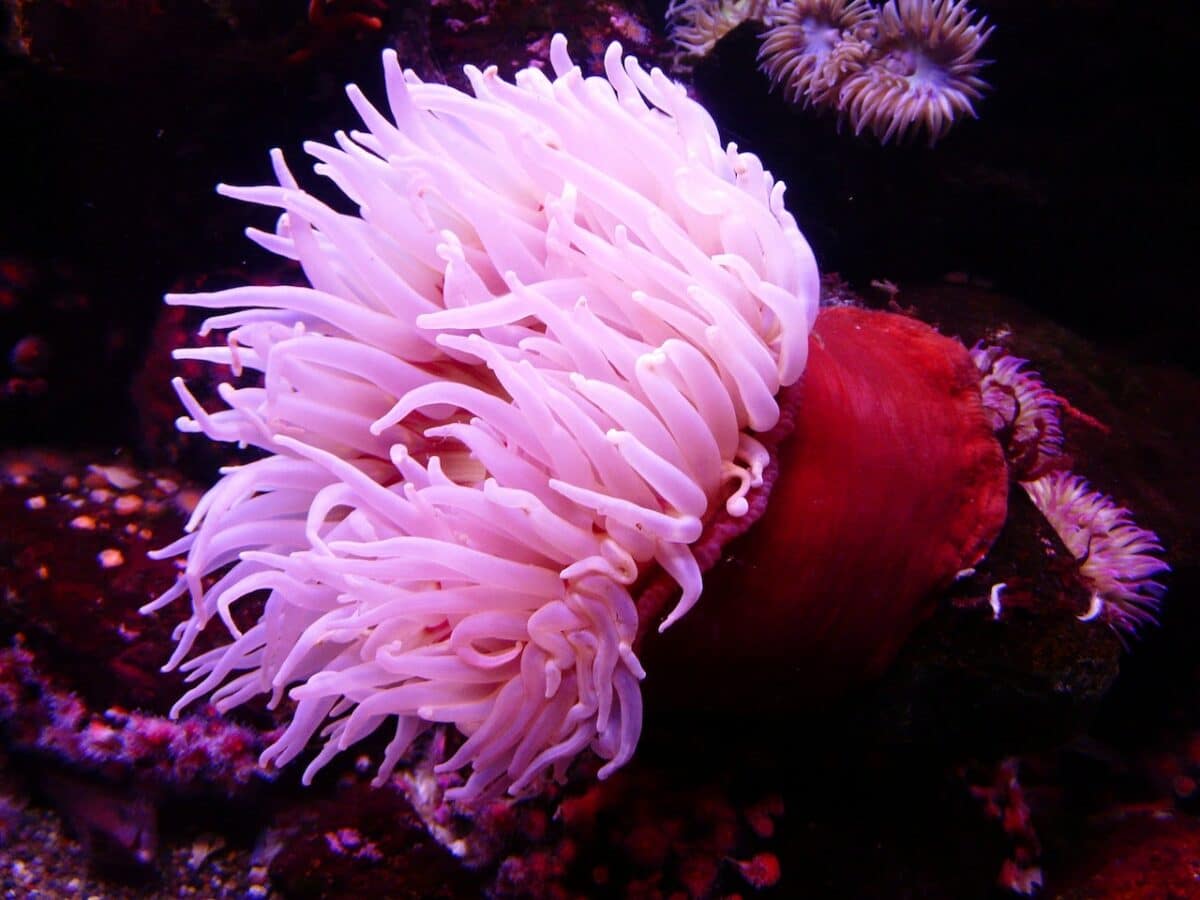
Communication plays a vital role in the interaction between clownfish and anemones. Scientists have discovered that clownfish can communicate with their hosts via chemical signals. This allows them to recognize and remain loyal to their specific anemone partner.
Meet another funny-looking deep sea resident: the Skate Fish
Life Cycle of Clownfish Within the Anemone
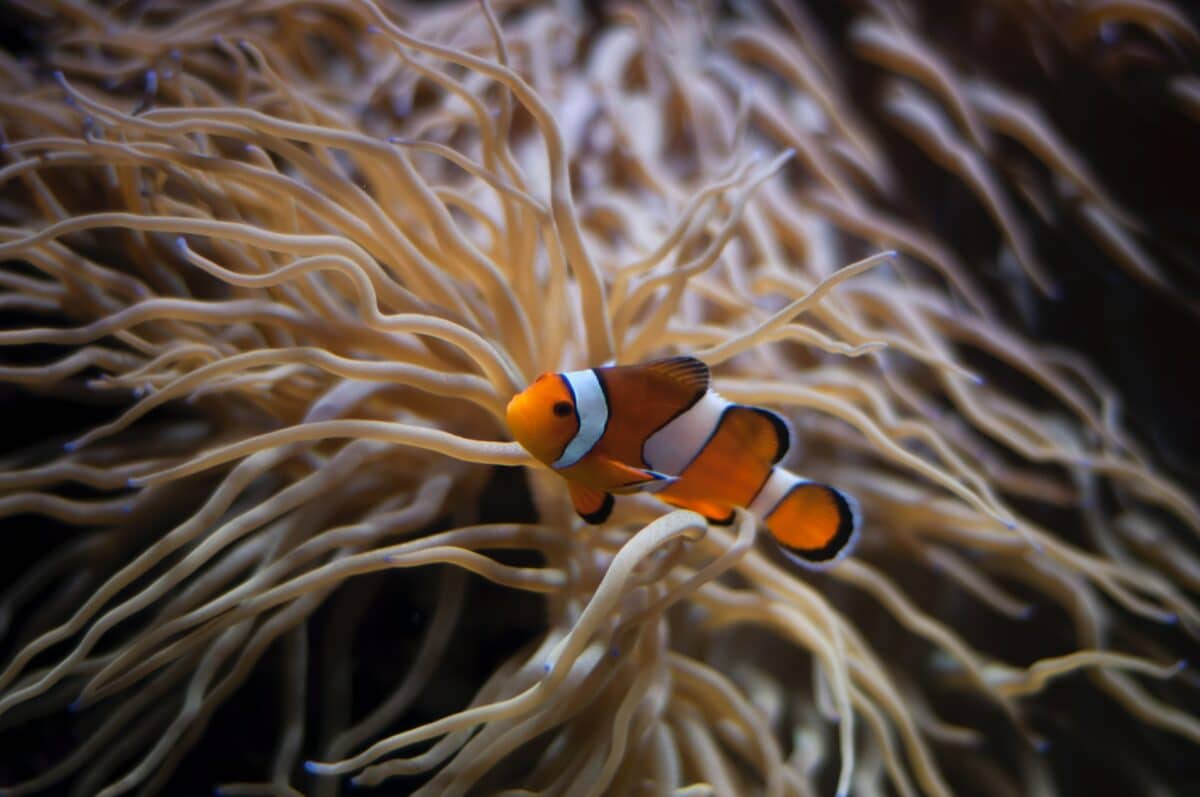
The life cycle of clownfish within the anemone is a fascinating process. It beautifully showcases the intricate relationship between these two species.
The clownfish’s life cycle begins with the spawning of eggs by adult clownfish, who meticulously select a suitable anemone as their nesting site. The eggs are laid on a flat surface close to the anemone, typically on a rock or near its tentacles, providing protection from predators. The male clownfish takes on the responsibility of guarding and caring for the eggs, diligently fanning them to ensure proper oxygenation.
As time progresses, the eggs hatch into larvae, which are planktonic and drift in the ocean currents. This stage is crucial for clownfish as it allows them to disperse and find suitable anemones to inhabit. During this period, clownfish larvae possess specialized olfactory receptors, enabling them to detect the chemical signals emitted by anemones. This remarkable sense of smell guides them towards their future host.
Once it finds a suitable anemone, the clownfish larvae settle near its tentacles. However, the clownfish must gradually adapt to the anemone’s stinging cells by developing a mucus layer that protects them from harm. This process can take several weeks and involves delicate communication between the clownfish and the anemone.
Threats To the Symbiotic Relationship
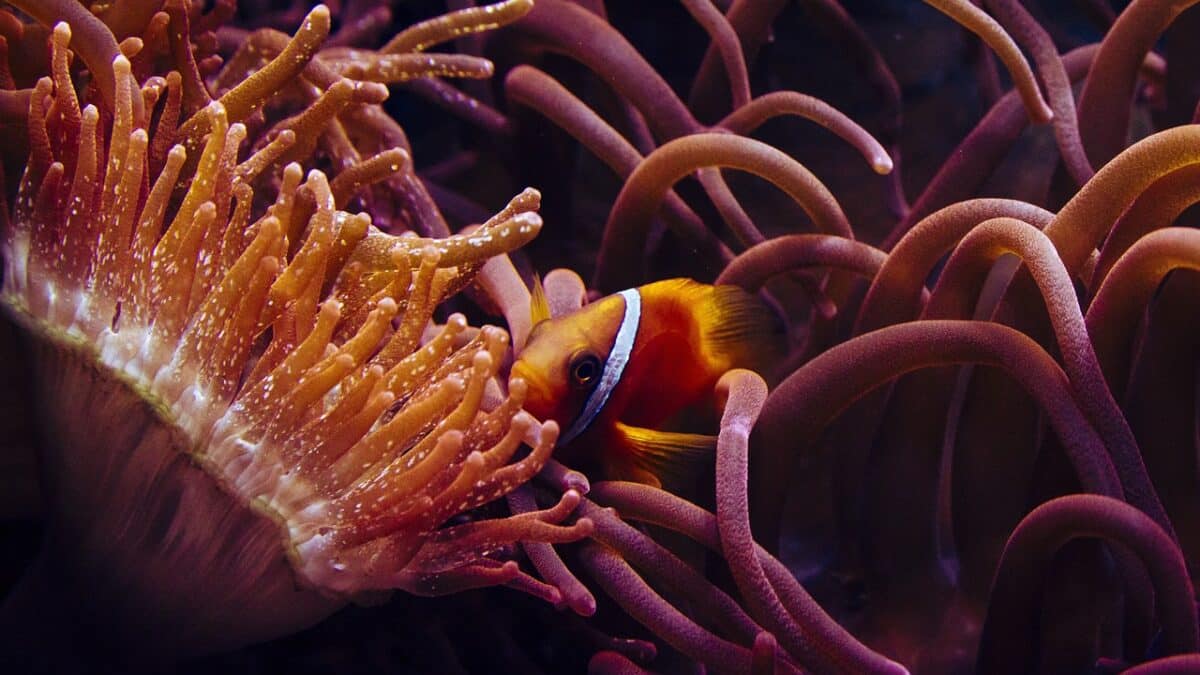
The symbiotic relationship between clownfish and anemones is one of nature’s most fascinating phenomena. Clownfish can live within the stinging tentacles of anemones without being harmed in exchange for keeping the anemone clean and protected from predators.
However, this great relationship is threatened by human activities such as harvesting anemones for the aquarium trade and overfishing of reef predators like triton snails. Pollution and climate change also pose significant risks to the survival of both clownfish and anemones.
Conservation Efforts and Sustainable Practices
The conservation of clownfish within the anemone is crucial to ensuring the health of these colorful water creatures and the ecosystem in which they live.
Sustainable practices, such as regular monitoring and maintenance of the anemone environment, are essential to the long-term survival of clownfish populations. It is also important to promote responsible pet ownership, as many people keep clownfish as pets in home aquariums. Education on proper care and the dangers of collecting wild clownfish can help reduce the impact of human activity on these species.
FAQs About Clownfish and Sea Anemones
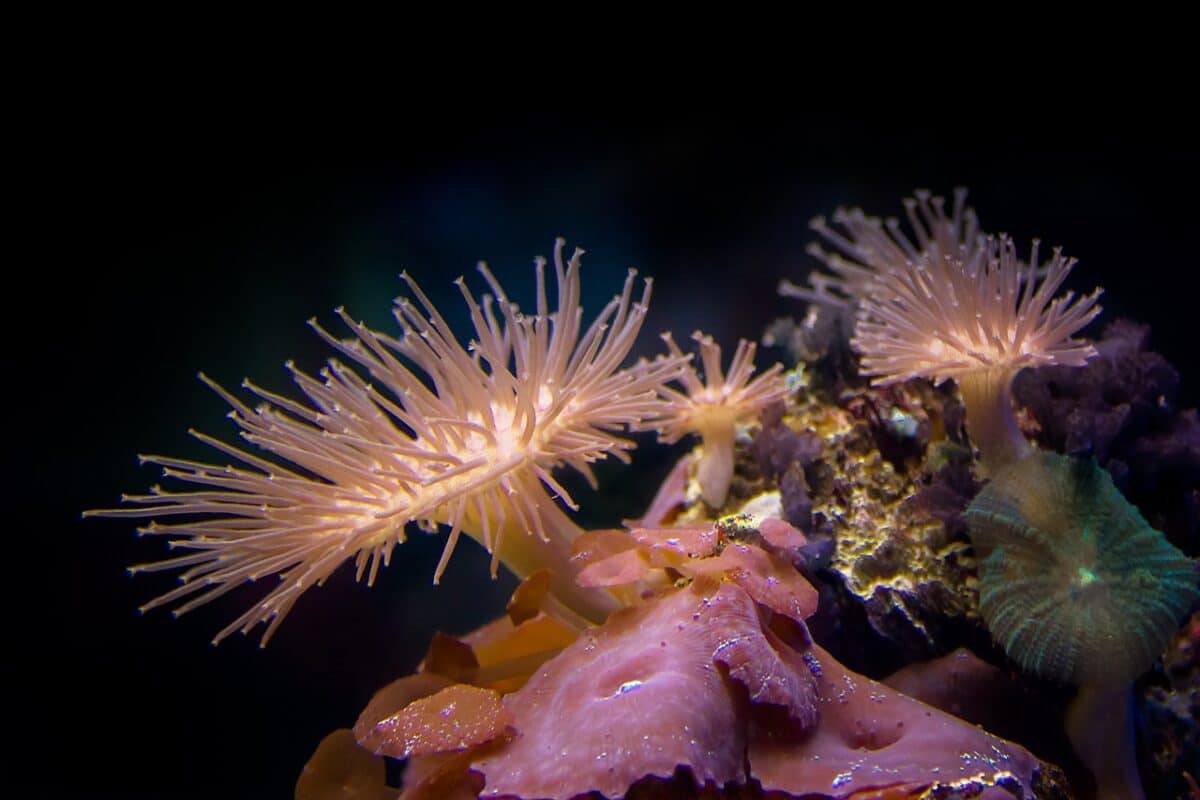
Clownfish and sea anemones engage in a mutualistic symbiotic relationship, where both species derive benefits from their interaction.
Clownfish have a mucus coating on their skin that protects them from the stinging cells of sea anemones, allowing them to live among the anemones without being harmed.
Yes, some species of sea anemones can sting humans if they come into contact with their tentacles. The severity of the sting can vary depending on the species and individual sensitivity.
Clownfish need a tank with proper water conditions (temperature, salinity, pH), a suitable anemone or appropriate alternative hiding spots, and a balanced diet consisting of commercial fish food or live prey like brine shrimp.
Wrapping Up: The Symbiotic Relationship of Clownfish and Sea Anemones
Ultimately, the intricate relationship between clownfish and sea anemones serves as a poignant example of the interconnectedness and interdependence found in nature. It highlights the delicate balance required for ecosystems to thrive.
As stewards of the oceans, it is our responsibility to take better care of these fragile environments, reducing pollution, addressing climate change, and supporting sustainable practices. By doing so, we can help ensure the continued survival and well-being of both clownfish and sea anemones, preserving the beauty and diversity of our marine ecosystems for future generations to appreciate and study.
Thank you for reading this article about the fascinating relationship between clownfish and sea anemones! Our oceans are deep and full of life – keep exploring with us:
- Uncover the Largest Lobsters Ever Caught
- Treating a Stonefish Bite
- Introducing the Fastest Swimmer in the Ocean
- Man Saves Pelican Choking on Fish at the Last Second - April 26, 2024
- Brave Monkey Saves Kitten Abandoned in a Well - April 25, 2024
- Octopus Stuck to Diver’s Back and Won’t Come Off - April 25, 2024

